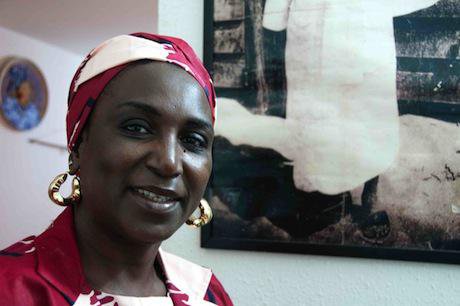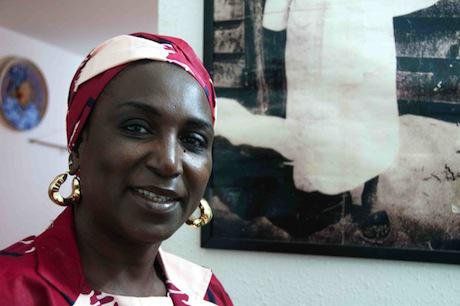More than through any other lens, migration foregrounds gender as a construct that is also at once a process in the making.


Bombo. UNU-GCM. All rights reserved.There is a curious tendency to conflate gender with women. In the context of migration, a field where gender considerations and clarifications have yet to make serious incursions, ‘migration and gender’ almost always means ‘migration and women.’
In policy circles, efforts to ‘mainstream gender’ refer, in fact, not to considerations of gender as a set of social constructs that apply in different ways to all sexes, but to the inclusion of women and women’s needs in policy formation. ‘Gender equality,’ even for some women’s groups, refers primarily to the inclusion of women rather than to the accordance of equal relevance to the great diversity and possibility that exists within the panorama of gender. This is a misuse of language symptomatic of the historical disregard of women. It reflects the tendencies of patriarchal and hetero-normative paradigms in language and ways of thought, whereby considerations of gender amount, in fact, to a mere gesture of unclear acknowledgement to that 49.6 percent of the global population that, strangely, is born to marginality on account of sex.
When the Women of the World project set out to document the migration histories of the 16 women who collaborated with us, it quickly became apparent that what we were tracing were also the alterations to gender practices and perceptions that occur with migration. As a result, what came to light is the great diversity, malleability and adaptability of gender, often presumed to be a given or a state, rather than a process.
More than through any other lens, migration foregrounds gender as a construct that is also at once a process in the making; one, too, that lends itself to change and flux. It exposes the fluidity of gender. Several of the women interviewed spoke of release from convention through migration, of realising their need to inform women in their home countries of new or revised horizons for womanhood, and of understanding the political potential in confronting the established limits placed on them as women, on both personal and public fronts.
The awareness of the constructed nature of gender led to new horizons of possibility around work, wages, recognition and creativity. The result is an alteration over time in how they perceive themselves as actors in the world. Migration, it would seem, brings empowerment to many women, mobilizing their lives, actions and imaginations in new and unexpected ways.
Indeed, gender awareness, for many of those interviewed, led to political awareness. Once gender is no longer viewed as an inviolable constant, but as that set of behaviours, practices, narratives and imaginations that play a vital role in helping to sustain and develop our identities as individuals and members of society, as migrant as migration itself, it allows the subject to explore her own dynamic.
The collaborators in the Women of the World project no doubt share a certain desire to enter zones of visibility – a fact that is reflected in and through the project itself. The fact, remains, that there are, however, countless women across the world who, on the one hand, play key roles, albeit in small, specific and invisible ways, in sustaining the societies that we inhabit and, on the other, remain unacknowledged both economically and politically. This is particularly so in the case of migrants.
Famously, it has been said that too many immigrant women suffer from confinement within the five ‘C’s’: caring, cashiering, cleaning, catering, clerical. There are many reasons for this. Globally, the education of girls lags far behind that of boys. As a result, the ambitions and imagination of women struggle to stretch to means of empowerment. Also at play is the gender stereotyping of skills, so that care work, for example, is viewed as best done by women. Even where women are educated or professionally qualified, migration can bring on the challenge of formal recognition in host countries. Language, too, can be a problem. As some of our collaborators stated, fear – of the unknown, of what others think or of disobedience to social norms – can hold women back.
On the one hand, immigrant women entering the labour force in host countries must adapt to fit in with the contexts and demands of the workplace; on the other, they may find themselves split, still wishing to meet the gender-based expectations of the home cultures that indoctrinated them with set expectations and values. Relegated all too often to low-paid, often insecure, physically demanding and poorly acknowledged sectors of employment, immigrant women can often find it hard to tap into the political potential of gender awareness in the context of migration. Often, they may also find themselves in employment through degrees of gender expectation – or, dare I say, exploitation? – in which their own conditioning is a factor as much as the limitations imposed on them from society.
If we take into account the relative success of feminism in emphasizing the labour and economic rights and potential of women in the workforce, we are left with a complex and multifarious scenario. Women may be earners, but remain fettered by gender constraints. Take, for example the case of women from South Asia who leave behind children of their own in order to work as nannies in the homes of the well-to-do in the Gulf and elsewhere, often living for long periods away from their children, but in relations of intimate caring with the children they look after.
Take also the much vaunted statement that the feminisation of migration signals the economic contributions made by women, no longer merely domestic companions to migrants (male), but earners in their own right and migrants who, in fact, send larger shares of their earnings back to their home countries than do their masculine counterparts. This may be good to know, but various questions do come to mind. Why do women send a larger share of their earnings back? Is it because they are the ‘caring’ sex or because they feel somehow obliged to ‘share’ what is rightfully theirs through years of gender-based indoctrination on how women ought to think of others before they think of themselves? Why are immigrant women perhaps less vertically mobile in professional fields than men (as are women, in general)? Is it because of limits imposed both externally, through how society assigns boundaries to gender in the context of women, and internally, through a reticence on women’s parts, also stemming from gender preconceptions, to assert their rights and explore their potential?
Migrants, regardless of sex and gender and regardless, too, of the causal factors that set them on their routes, inevitably go in search of a better life. All too often, the better life that results from the migratory venture is for those whom they send remittances to or – alas! – for the next generation.
An awareness of gender as a life-long, contingent and historically constituted process can lead to empowerment for immigrant women, if only because migration offers them the chance to access new social landscapes, new perspectives and new possibilities.
In order to support this, though, gender must not be conflated with women. Language needs to be rethought. Gender should be seen, instead, as relevant to all humans, that base-line social construct, malleable, changeable and fluid as identity itself, a process of social construction that is filled with possibility.

